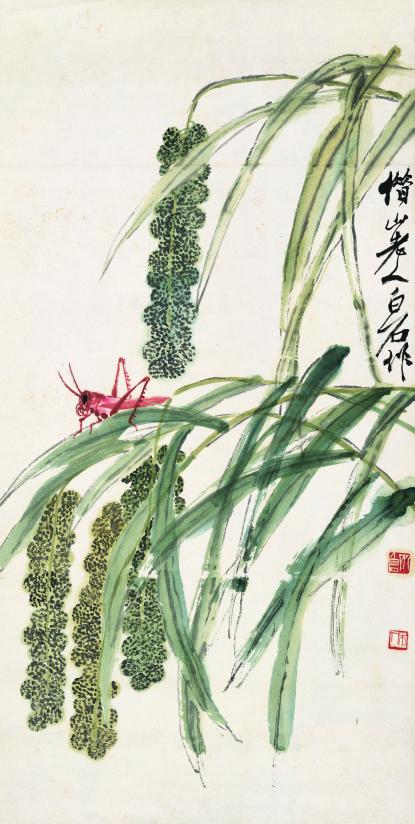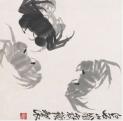2024. May 2. Thursday
Hungarian National Gallery - Budapest
 |
Address: 1014, Budapest Szent György tér 2.
Phone number: (1) 201-9082
E-mail: info@mng.hu
Opening hours: Tue-Sun 10-18
|
The exhibition has closed for visitors.
2015.04.23. - 2015.06.28.
Museum tickets, service costs:
|
Individual ticket for adults
|
3200 HUF
|
/ capita
|
|
Individual ticket for students
|
1600 HUF
|
|
|
Individual ticket for pensioners
|
1600 HUF
|
/ capita
|
|
Video
|
1000 HUF
|
A comprehensive retrospective exhibition presenting the entire oeuvre of one of the most outstanding artists of Chinese painting, Qi Baishi's will be be shown for the first time in Europe. The exhibition 'The Spell of Nature – Qi Baishi Paintings from the Collection of the Academy of Art in Beijing' presents nearly 110 paintings.

Qi Baishi (Csi Paj-si, 1864–1957) first earned success as a timber and seal carver and only turned to painting only towards the end of his life. With his pictures depicting birds, flowers images and also with his imaginative use of colour he expanded the scope of traditional Chinese painting. He was mainly interested in the minute life phenomena. He painted simple motifs seen in nature: flowers, vegetables, fruits, animals, mostly crabs, fish, frogs and insects. He put a great emphasis on calligraphy in his compositions.
Qi Baishi committed to traditional Chinese painting, just when his contemporaries turned their attention to Western painting. The more than a hundred of his works to be shown in Budapest follows the development of his painting style. In addition to landscapes and figurative paintimgs, the main section of his oeuvre are the paintings from his old-age, after changing style featuring masterpieces of plants and birds.
Qi Baishi's paintings found their way to Europe in the 1930s, and also to Hungary. In 1930 the Chinese National Salon of Fine Arts showed twenty-nine pictures by him. In 1938, again the National Salon, showed twenty-eight of his pictures.
A special section of the exhibition is from the well-known pictures by the Chinese painter selected from the Hopp Ferenc Museum of Asian Art. A dozen pictures and 80 woodcuts can be seen from the artist in the Hopp Ferenc Museum. The collection acquired the first paintings by Qi Baishi at the beginning of the 1930 as presented by a teacher at the Beijing Art Academy, Vojtech Chytil (1896–1936). The six famous pictures by Qi Baishi include the ones depicting fish and crabs, which are considered the trademark of the master.
The exhibition now opening at the National Gallery is the first collective exhibition not only in Budapest but also throughout Europe of the man who renewed modern Chinese pictography.

Qi Baishi (Csi Paj-si, 1864–1957) first earned success as a timber and seal carver and only turned to painting only towards the end of his life. With his pictures depicting birds, flowers images and also with his imaginative use of colour he expanded the scope of traditional Chinese painting. He was mainly interested in the minute life phenomena. He painted simple motifs seen in nature: flowers, vegetables, fruits, animals, mostly crabs, fish, frogs and insects. He put a great emphasis on calligraphy in his compositions.
Qi Baishi committed to traditional Chinese painting, just when his contemporaries turned their attention to Western painting. The more than a hundred of his works to be shown in Budapest follows the development of his painting style. In addition to landscapes and figurative paintimgs, the main section of his oeuvre are the paintings from his old-age, after changing style featuring masterpieces of plants and birds.
Qi Baishi's paintings found their way to Europe in the 1930s, and also to Hungary. In 1930 the Chinese National Salon of Fine Arts showed twenty-nine pictures by him. In 1938, again the National Salon, showed twenty-eight of his pictures.
A special section of the exhibition is from the well-known pictures by the Chinese painter selected from the Hopp Ferenc Museum of Asian Art. A dozen pictures and 80 woodcuts can be seen from the artist in the Hopp Ferenc Museum. The collection acquired the first paintings by Qi Baishi at the beginning of the 1930 as presented by a teacher at the Beijing Art Academy, Vojtech Chytil (1896–1936). The six famous pictures by Qi Baishi include the ones depicting fish and crabs, which are considered the trademark of the master.
The exhibition now opening at the National Gallery is the first collective exhibition not only in Budapest but also throughout Europe of the man who renewed modern Chinese pictography.





